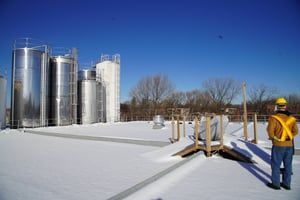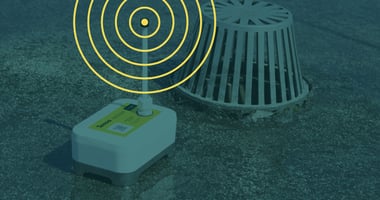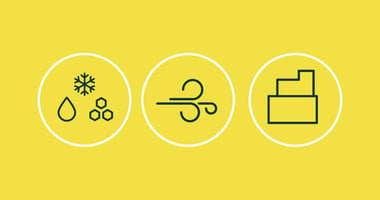A factory, witness of six decades of industrial history. A place where Coca-Cola bottles gave way...
Clogged Roof Drains: What Are the Risks for your Building?

Clogged drains are one of the most common and damaging problems for flat roofs. Roof drains are often overlooked, but they are crucial to the integrity of your roof and can cause serious problems if they become clogged. According to Beneva (an insurance company), water damage is at the top of the list for disaster claims. However, what you need to know is that the majority of these claims are preventable. In the case of water damage, 93% could have been avoided according to the American Property Casualty Insurance Association (APCIA). Here are some major risks caused by clogged roof drains, as well as tips on how to prevent them.

Infiltration and the Accumulation of Stagnant Water
When drains are blocked by debris such as leaves, branches, or even bird's nests, rainwater cannot drain properly. This leads to an accumulation of water on the roof. Standing water increases the pressure on the roof and can eventually cause water to leak through the roofing material. It can also damage the roofing material over time. Shingles and other coatings can break down faster, requiring repairs or replacement before the end of their expected lifespan.
Excessive Weight on the Structure
Stagnant water can also add significant weight to the roof, especially during heavy rains. This can overload the structure of your building, potentially causing costly structural damage. This damage can extend to the structure, support beams, decking, gypsum or plaster ceilings, and more. In the long term, the extra weight can also cause permanent buckling in the materials that make up the roof. The roof slopes are then modified and the water is potentially redirected to places on the roof where no drains are installed. The risks attached to stagnant water are then all the more accentuated and irreversible.


Health Risks
Stagnant water and seepage are a breeding ground for mold, fungi, and bacteria. These microorganisms can not only further deteriorate the roof structure, but also pose a risk to building occupants by causing allergies and respiratory problems. Without the infiltration of stagnant water, these allergens are not able to flourish.
Operational Issues
For industries, businesses and institutions that are the victim of water infiltration, the damage can also be operational. Indeed, water damage can cause electrical or other equipment to break down, putting them out of service. It can also damage merchandise, furniture and even documentation. Furthermore, in the majority of cases, the roof covers 100% of a company's activities. All sectors are therefore at risk, especially those industrial processes that require a completely hermetic environment, where humidity must be very well controlled. Finally, repair work resulting from a water infiltration incident can also result in the suspension of your company's normal activities.
Preventive Maintenance and Upkeep
Regardless of the age of your roof, whether it is new or 15 years old, the risks mentioned above are very high if some of your drains or their storm lines are blocked.
Indeed today, several factors amplify the risks associated with the presence of clogged drains. Notably climate change is particularly responsible; according to Beneva, "floods, freezing rain, weather cocktails [...] that used to occur every 40 years, now occur every 6 years."
In addition, the Association des maîtres couvreurs du Québec (AMCQ) now requires that new roofs be free of standing water during the summer. So, within a reasonable period of 24 to 48 hours, there should be no water left on your roof. Otherwise, you may have difficulty claiming your warranty in the event of a problem.
To avoid these situations, it is essential to keep roof drains clean and clear. Although drains are only a small part of a building's overall infrastructure, their proper functioning is crucial to preserving the integrity of your roof and protecting your building from significant damage. Investing in preventative maintenance is an effective way to act proactively in the face of these risks and can save you time, money, and hassle in the long run.
With an easily deployable solution such as the one offered by Tensio, you will be able to receive real-time alerts when your drains need maintenance, thus preventing all subsequent risks and associated stress. You will be able to act systematically when necessary, without having to continually inspect your roofs. You will prevent water accumulation, pooling, leakage, excessive weight, health risks and operational issues.

%20(2).png?width=150&height=50&name=Tensio_Logo-SansPositionnement_RVB%20(1)%20(2).png)



